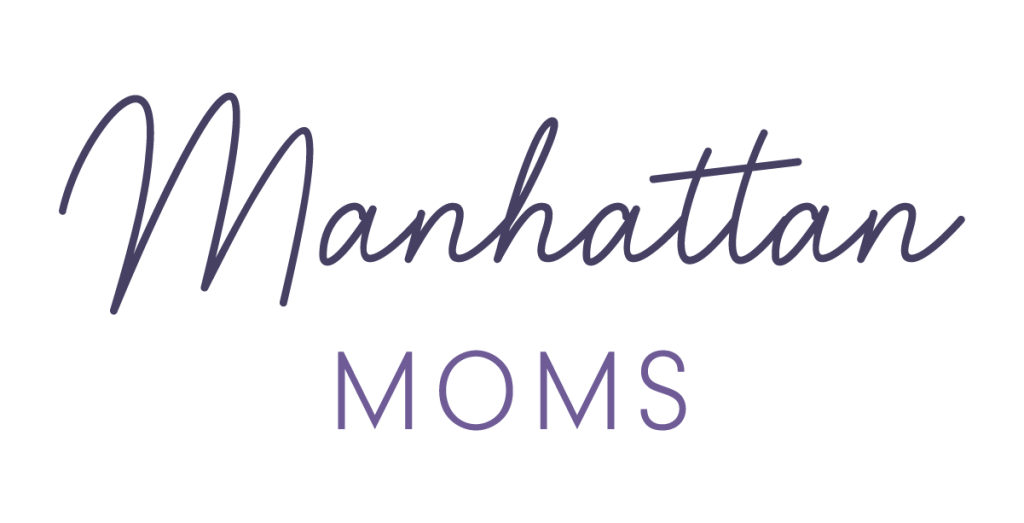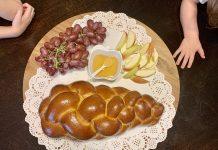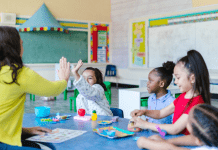 This past year, my three-year-old baby launched from the nest into his first year of preschool. This was the first time he was out of a family member’s care for longer than an hour or two, and I wanted to prepare him for success in the classroom as much as possible. If you’re starting on a preschool journey this fall, here are a few things we did in the months leading up to the first day of preschool.
This past year, my three-year-old baby launched from the nest into his first year of preschool. This was the first time he was out of a family member’s care for longer than an hour or two, and I wanted to prepare him for success in the classroom as much as possible. If you’re starting on a preschool journey this fall, here are a few things we did in the months leading up to the first day of preschool.
The experiences referenced here represent our personal experience in a two day part-time program. I recommend connecting with the director of your chosen facility to visit or learn specifics for your program.
Gathering Supplies
Full-Size Backpack
At drop off, the only thing in my son’s backpack was a bagged change of clothes and a water bottle. But at pickup, there might be much more. In early spring and late fall, jackets and hats might be needed for morning recess, then get zipped away for the afternoon. Artwork can go in a full-size bag without being folded. On rainy days, his lunchbox would be packed in there too, so we could quickly rush from the building to the car.
Lunchbox and Ice Packs
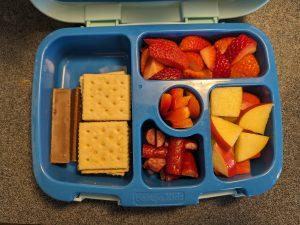 Some programs may have children eat lunch during preschool. If so, you’ll need a lunchbox, and the USDA recommends having two cold sources for food safety. We chose a Bentgo Kids lunch box after seeing them shared as part of Feeding Littles’ favorite lunch gear. When I first opened it, it seemed quite small, but it definitely holds enough for my toddler. We put the Bentgo in a PackIt lunch box, which has built-in ice packs in the sides and lid, so you just toss it in the freezer once it comes home. I liked the idea of having one lunch container and one lunch bag instead of worrying about multiple containers or separate ice packs getting misplaced.
Some programs may have children eat lunch during preschool. If so, you’ll need a lunchbox, and the USDA recommends having two cold sources for food safety. We chose a Bentgo Kids lunch box after seeing them shared as part of Feeding Littles’ favorite lunch gear. When I first opened it, it seemed quite small, but it definitely holds enough for my toddler. We put the Bentgo in a PackIt lunch box, which has built-in ice packs in the sides and lid, so you just toss it in the freezer once it comes home. I liked the idea of having one lunch container and one lunch bag instead of worrying about multiple containers or separate ice packs getting misplaced.
Utensils
Personally, I only sent handheld foods in my son’s lunch, but if you want to send utensils you could save up fast food sets or get a cheap set like this Target option so it’s not a big deal if something gets lost or broken.
Water Bottle
Make your child can easily open and close their own water bottle. Will it leak if their backpack falls sideways? If it gets knocked over while open, does water stay contained by a straw or come pouring out?
Labels
In the adorable chaos of a preschool class, it’s important to label your items – clothes, hats, lunch box, water bottles, the whole nine yards. You can certainly go simple with a permanent marker, or check out Mabel’s Labels for cute customizable options that are washable and durable. Consider including your child’s first and last name in case they share a first name with a classmate.
Fostering Independence
Our preschool makes a conscious effort to foster independence in students, including everything from dumping playground sand out of their shoes to pouring cups of water at snack. Below are the two biggest things I specifically focused on the summer before my son started class. We’ve worked on other small skills throughout the year, but I wanted him to have a strong foundation with these from the outset.
Potty Training
In a classroom environment, this encompasses a lot more than just declaring the need to potty. Can your child get their own clothes up and down? Get on and off the potty alone? Wipe themselves without unrolling a mile of toilet paper? Wash their hands effectively?
After visiting our school, I knew my son would be expected to use an actual child-size toilet. Most of us don’t have one of those installed at home, and they are taller and wider than many of the popular freestanding plastic potties. Fortunately, the Manhattan Public Library has one in the children’s room bathroom, along with a step stool for the sink, and soap and towels within easy reach for a toddler. The summer prior to him starting preschool, we made a point of using it during every library visit, and I became increasingly hands-off until he could handle everything himself.
Accessing Their Lunch
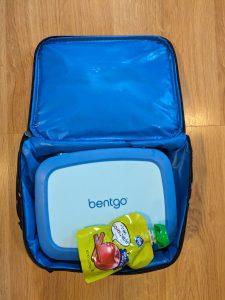
I’ve talked about what kind of lunch box we bought, but the next step was getting my child to open it. Our Bentgo box has a tight seal, which is great for things not leaking, but it also means it took a little practice for my 3-year-old to be able to open the latches and get the lid up in a way that would not result in his lunch spilling all over the table. He also practiced unzipping the PackIt bag. It all sounds oversimple until you see your toddler get flummoxed trying to get a zipper around a corner.
Personally, I kept individual packaging out of his lunchbox whenever possible so he could access everything without teacher assistance. When we did send a yogurt or applesauce pouch, I opened it in advance to pop the tough plastic tabs securing the lid. I then twisted the lid back on most of the way and never had any issues with it leaking, and my son was able to re-open it himself.
Letting Go… Literally and Figuratively
Separation Anxiety
The backpack is zipped, the shoes are fastened… now it’s time for drop off. If separation anxiety causes tears and crying, experts recommend that parents be a positive example for the child. Since we started dropping my son off for even an hour of Sunday School, we’ve used the phrase “We will be back when [activity] is over, because Mommy/Daddy always come back to get you.” A consistent routine of hugs/kisses/bye bye with no anxious lingering will help smooth the transition. And if your child requests exactly 31 kisses, just try to think one step ahead and scoot off the main walkway (guilty).
You can also draw matching hearts or stars on each of your hands, which fits in nicely with The Kissing Hand, a popular book about transitioning to school. They can look at the drawing, kiss it, and know that it means you always love them, even when you’re not in the same room as them. Substitute their wrist or forearm if a hand drawing means they won’t wash their hands… not that I speak from experience. We’ve also used small stickers in the same way, and then put packing tape over the sticker, because mama’s no fool.
Introduce the Classroom
If your facility allows it, snap a few pictures during a tour, orientation or open house. Print them out or look at them on your phone with your child in the days leading up to class starting. “This will be your classroom. What kinds of toys do you see? This is the potty. You can use it whenever you feel that you need to go pee. Your teachers will take good care of you, and you can always ask them for help if you need something.” Consult your local children’s librarians about The Kissing Hand and other picture books about starting preschool.
Connect After Class
I’ve had the privilege of working from home since my son was born, so when he went off to class, it was strangely disconcerting to have no idea what he was doing for a big chunk of time. Our school uses an app to share what the class has been doing, which was not only fun for me to see, but helped me connect with my son. I could ask questions based on pictures, and read the day’s brief summary to understand that when he said they “cut out photos of Hy-Vee,” that meant they’d read Cloudy With a Chance of Meatballs and created their own landscapes of raining food.
One Final Tip
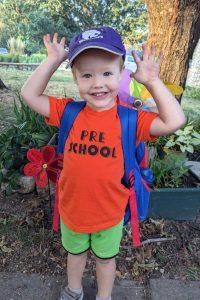 If you’re hoping to get that perfect snapshot of their big first day, consider taking those the day or weekend BEFORE their actual first day. That way, you’re not feeling the pressure of getting everything ready and hustling a toddler out the door on top of capturing prized memories. If they have a meltdown, you’ll have time to step back, breathe and reset. Google a free “first day of preschool” printable and have them color it well in advance, and you’ll be on your way to a less stressful photo op!
If you’re hoping to get that perfect snapshot of their big first day, consider taking those the day or weekend BEFORE their actual first day. That way, you’re not feeling the pressure of getting everything ready and hustling a toddler out the door on top of capturing prized memories. If they have a meltdown, you’ll have time to step back, breathe and reset. Google a free “first day of preschool” printable and have them color it well in advance, and you’ll be on your way to a less stressful photo op!

